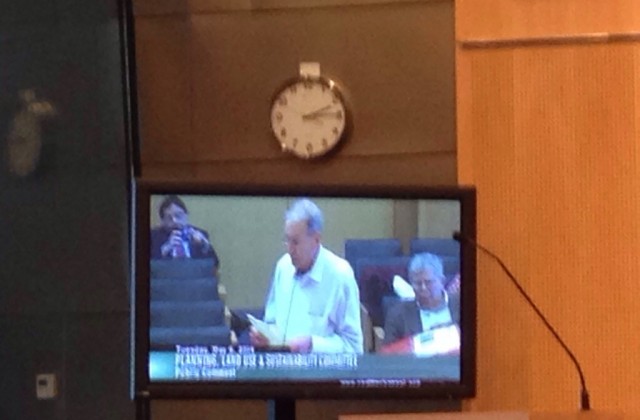Small-Lot Compromise Passes PLUS Test, but What About Burgess?
Today the Planning Land Use and Sustainability (PLUS) Committee took the next to last step in finalizing small-lot legislation. It’s been almost two years now since the City Council passed legislation shutting down development on historic lots, promising to create legislation that would clarify existing code so that infill development in single-family neighborhoods could continue. The legislation passed yesterday afternoon by the PLUS Committee didn’t make huge strides in making the code easier to understand, but it did resolve the historic lot issue and create the basis for building of new single-family homes to continue. You can read a great summary of the legislation by Erica Barnett at Publicola.
Unfortunately, the legislation did not include the passage of the 80 Percent Rule, something we’ve been making a case for since early 2013. We always believed–and still do–that the 80 Percent Rule would have made the code easier to understand for everyone, including builders and neighbors. The 80 Percent Rule would have allowed development on lots 80 percent of the average of all the lots on a block. We supported a height limit of 22 feet for flat roofs and 27 for pitched roofs with a minimum developable lot size of 2500 square feet. Our proposal included set backs as well.
What passed the committee instead is an exception for lots 100 percent of the block face with the same conditions. This proposal made it through the committee but with the noticeable objection of Councilmember Tim Burgess who wasn’t quite clear on what his concerns about the 100 exemption are. He did say the proposal wouldn’t create that many new lots, maybe up to 250 new developable lots. And he also expressed concern about a new exemption being added to the code.
But here’s the thing about both of those points.
First, if the number of new lots created is small then why opposed the new exception. Clearly this is a modest exception that won’t create thousands of new issues all over the city. Instead, the 100 percent rule is a compromise that allows some new homes to be created. And these new homes would have all the limits we suggested in the 80 Percent Rule, height limits, set backs, and a minimum lot size of 2500 feet. This was noted in the meeting by Councilmember Clark who pointed out the minimum lot size to Councilmember Burgess. Also, if Councilmember Burgess wants more housing he should amend the legislation to support an 80 percent exception like we proposed: that would add as many as 700 more new homes. But the current legislation is a compromise, from 80 percent to 100 percent.
The second concern raised by Councilmember Burgess had to do with creating a new exception. But the Councilmember didn’t seem to understand he already supported an exception in the code when he voted for the maintenance of the 75/80 rule, which allows development on lots that are 75 percent of the zone and 80 percent of the block face. Councilmember Clark also pointed this out to him. But that didn’t stop Burgess from saying he’d try to amend the legislation in full Council to eliminate the 100 percent rule.
And keep in mind that this new exception includes limits that anyone using it would have to meet including the heigh limits, set backs, and minimum lot size. Even with the 100 rule, this legislation limits lot sizes for the exception to 2500 square feet. Since the size of the lot tracks to other nearby lots and includes limits on size and only creates a couple hundred lots it’s a bit baffling why Councilmember Burgess would pursue a change at full council.
I have a call in to Burgess’ office to get an answer about that, and I’ll report back here what I learn.
One other piece of good news is that the noticing requirements pushed by Councilmember Gerry Pollet didn’t make the cut either. These requirements would just add costs and hassle to building new homes. However, the legislation calls for separate action or legislation to deal with that.


